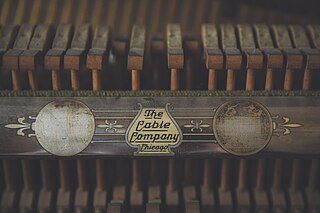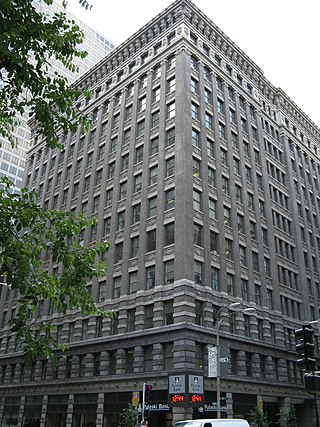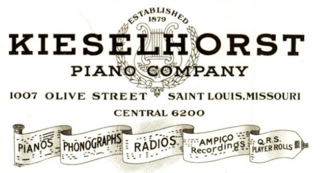
The Miracle Piano Teaching System is educational software which uses a MIDI keyboard to teach how to play the piano. It was published in 1990 by The Software Toolworks for the Nintendo Entertainment System, Super NES, Macintosh, Amiga, Sega Genesis, and MS-DOS compatible operating systems.

Meredith Jane Monk is an American composer, performer, director, vocalist, filmmaker, and choreographer. From the 1960s onwards, Monk has created multi-disciplinary works which combine music, theatre, and dance, recording extensively for ECM Records. In 1991, Monk composed Atlas, an opera, commissioned and produced by the Houston Opera and the American Music Theater Festival. Her music has been used in films by the Coen Brothers and Jean-Luc Godard. Trip hop musician DJ Shadow sampled Monk's "Dolmen Music" on the song "Midnight in a Perfect World". In 2015, she was awarded the National Medal of Arts by Barack Obama.

Presto is the thirteenth studio album by Canadian rock band Rush. It was released on November 17, 1989 by Anthem Records and was the band's first album released internationally by Atlantic Records, following the group's departure from Mercury. After the Hold Your Fire (1987) tour ended in 1988, the group members reconvened in December to decide their next step and agreed to take six months off before starting on a new album. Presto marked another change in Rush's sound, with guitar taking a more dominant role in the writing, a reduction in synthesizers and a return towards more guitar-driven arrangements.
Junya Nakano is a Japanese video game composer. After working for Konami in the early 1990s, he was employed by Squaresoft and then Square Enix from 1995 to 2009. He is best known for scoring Threads of Fate and co-composing Final Fantasy X for Squaresoft, arranging for Dawn of Mana and the Nintendo DS version of Final Fantasy IV for Square Enix, and scoring arcade video games such as X-Men and Mystic Warriors for Konami. Nakano has collaborated with Masashi Hamauzu on a number of games.

M. Welte & Sons, Freiburg and New York was a manufacturer of orchestrions, organs and reproducing pianos, established in Vöhrenbach by Michael Welte (1807–1880) in 1832.

The luthéal is a kind of hybrid piano which extended the "register" possibilities of a piano by producing cimbalom-like sounds in some registers, exploiting harmonics of the strings when pulling other register-stops, and also some registers making other objects, which were lowered just above the strings, resound. The instrument became obsolete partly because most of its mechanics were too sensitive, needing constant adjustment. The only pieces in the general repertoire to feature the luthéal are L'enfant et les sortilèges (1920–25) and Tzigane (1924), by Maurice Ravel.

QRS Music Technologies, Inc. is an American company that makes modern player pianos. It was founded as Q•R•S Music Company in 1900 to make piano rolls, the perforated rolls of paper read by player pianos to reproduce music. The company also produced shellac records in the 1920s and 1930s and radios beginning in the 1920s. Today, it makes modern, digital variations on the player piano and the recordings to drive them.

The Schiller Piano Company was an American manufacturer of pianos in Oregon, Illinois. It operated independently from 1890 to 1936, when it merged with the Cable Company and thereafter produced pianos under the name Cable and Conover. Thousands of pianos were produced in its factory, which was operated by corporate successors until 1971. The 120,000-square-foot (11,000 m2), stucco-clad building was renovated for use as an indoor mall in 1975 and today operates as the Conover Square Mall.

The Estey Organ Company was an organ manufacturer based in Brattleboro, Vermont, founded in 1852 by Jacob Estey. At its peak, the company was one of the world's largest organ manufacturers, employed about 700 people, and sold its high-quality items as far away as Africa, Great Britain, Australia, and New Zealand. Estey built around 500,000 to 520,000 pump organs between 1846 and 1955. Estey also produced pianos, made at the Estey Piano Company Factory in New York City.

Steck was a brand of pianos manufactured from 1857 to 1985. They were initially made by George Steck & Company before combining with the Aeolian Company in 1904. The Aeolian Company went bankrupt in 1985. The Steck piano brand was then sold to Sohmer & Co., and then to America Sejung Corporation, which dissolved in 2013.
Miguel del Águila is a prolific Uruguay-born American composer of contemporary classical music. He has been nominated three times for Grammys and has received numerous other awards.

The Cable Company was an American manufacturer and distributor of pianos and reed organs that operated independently from 1880 to 1936.

Boys & Girls is the debut studio album from American band Alabama Shakes. It was released on April 9, 2012, through ATO Records. The album peaked at number 6 on the US Billboard 200 and number 3 on the UK Albums Chart. A tenth anniversary deluxe edition was released on December 9, 2022, including a bonus disc of the band's live performance at KCRW's Morning Becomes Eclectic.

Steinway Hall was an 11-story office building, and ground-floor theater, located at 64 East Van Buren Street in Chicago, Illinois. The theater had at least 14 names over the years, opening in 1896 as the Steinway Music Hall, and closing in the late 1960s as Capri Cinema. In the early 1900s, the building held the offices and nucleus of a group of famous Chicago architects that included a young Frank Lloyd Wright. These architects, inspired by the Arts and Crafts Movement and the philosophies of Louis Sullivan, formed what would become known as the Prairie School.

The Frisco Building is a historic office building in downtown St. Louis, Missouri. The building was built in 1903-04 as the headquarters for the St. Louis–San Francisco Railway, which was also known as the Frisco. The architecture firm Eames and Young designed the building as well as its 1905-06 addition; the building's subtle ornamentation and its pier and spandrel system were both important developments in skyscraper design. The Frisco occupied the building for almost eighty years after its opening, and in that time played an important role in Missouri's economic development through railroad construction.

Material Defectuoso is the tenth studio album by Spanish hard rock band Extremoduro. It was produced by Iñaki "Uoho" Antón, and released on 24 May 2011. The first single "Tango Suicida" was released on 17 May 2011.
The Straube Piano Company (1895–1937) and its successor Straube Pianos Inc. (1937–1949) were American piano manufacturers of uprights, grands, players, and reproducing grands.
Winter and Company was an American manufacturer of pianos. Founded in 1901 as Heller & Co. by cabinetmaker Gottlieb Heller, the firm was purchased and renamed in June 1901 by Julius Winter. In 1903, the company opened a factory on Southern Boulevard in The Bronx borough of New York City. In 1904, the company began to sell player pianos that used a "Master Player" mechanism of its own design.
America Sejung Corporation was a distributor of pianos and guitars that operated from 2002 to 2013. It was a United States subsidiary of Sejung, a South Korean corporation with a factory in Qingdao, China. Headquartered in Ontario, California, America Sejung imported and sold acoustic pianos under the brand names of Hobart M. Cable, George Steck, and Falcone; digital pianos under the brand of Sejung; and guitars under the brands of S101 and Canvas.

The Kieselhorst Piano Company was an American vendor of pianos and publisher of sheet music that operated from 1879 to 1930 in Saint Louis, Missouri.
















